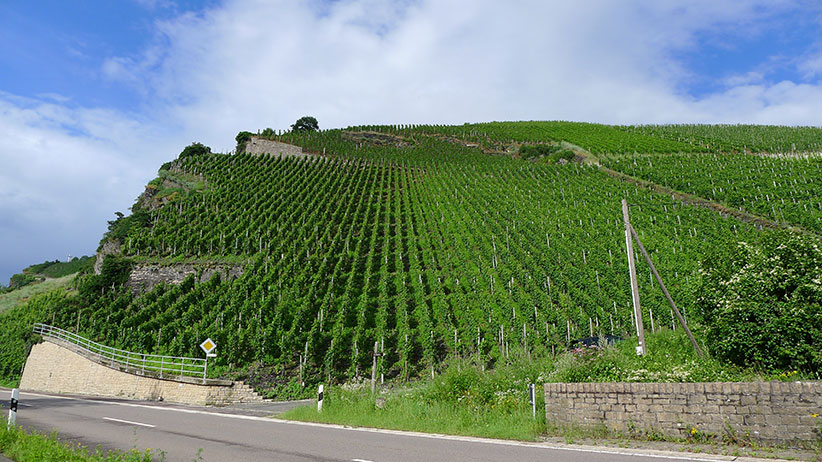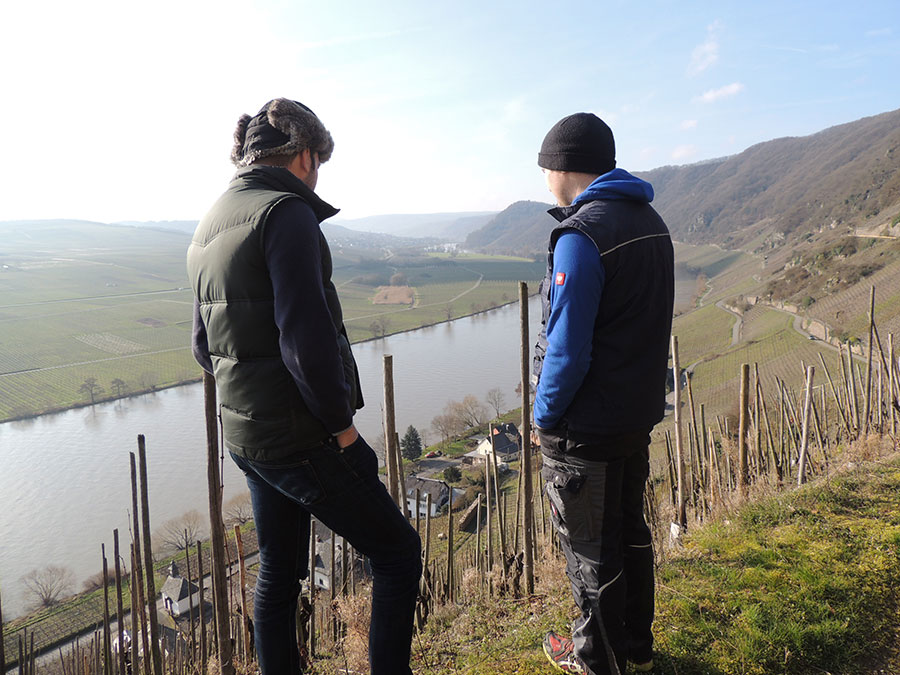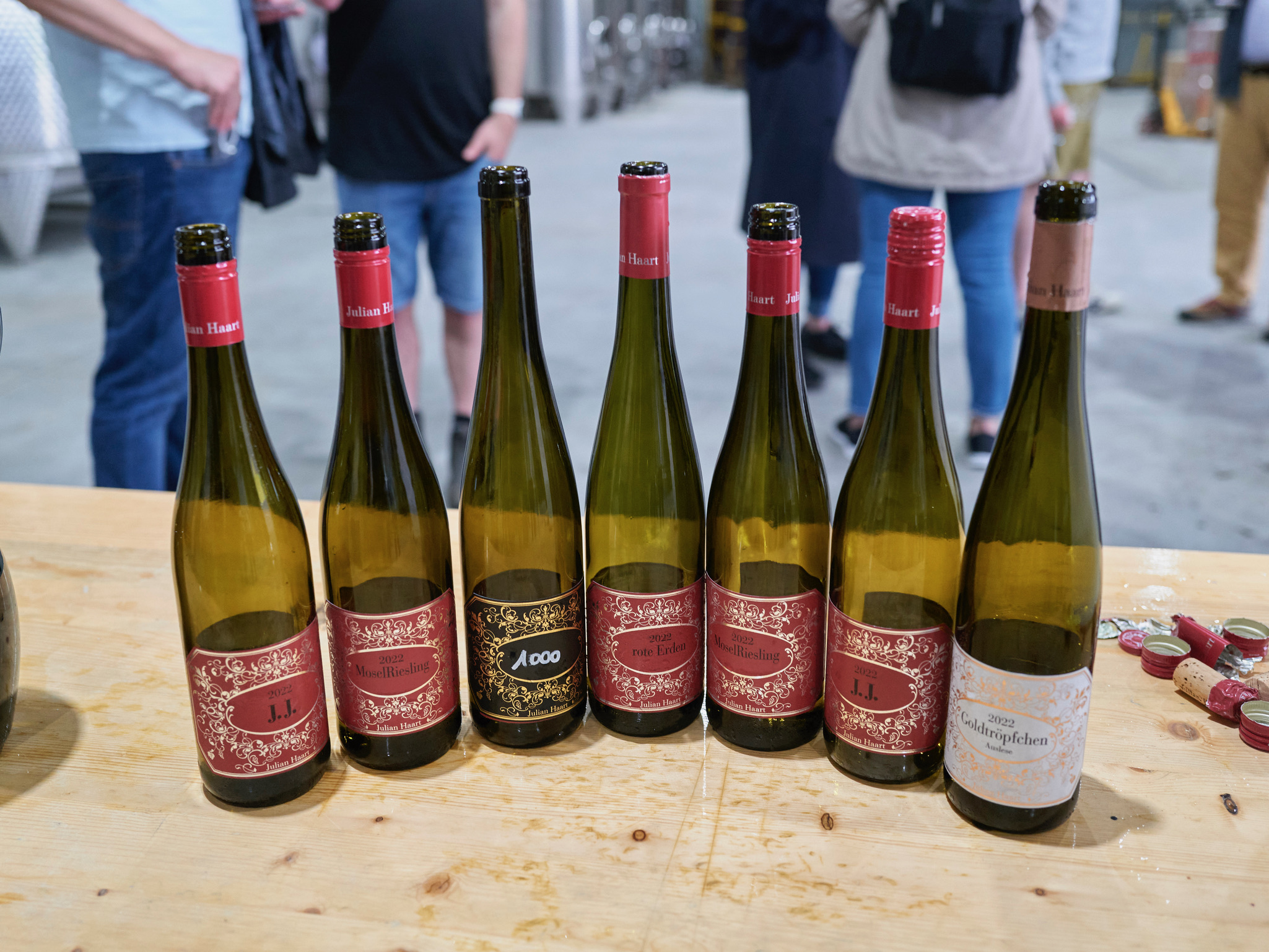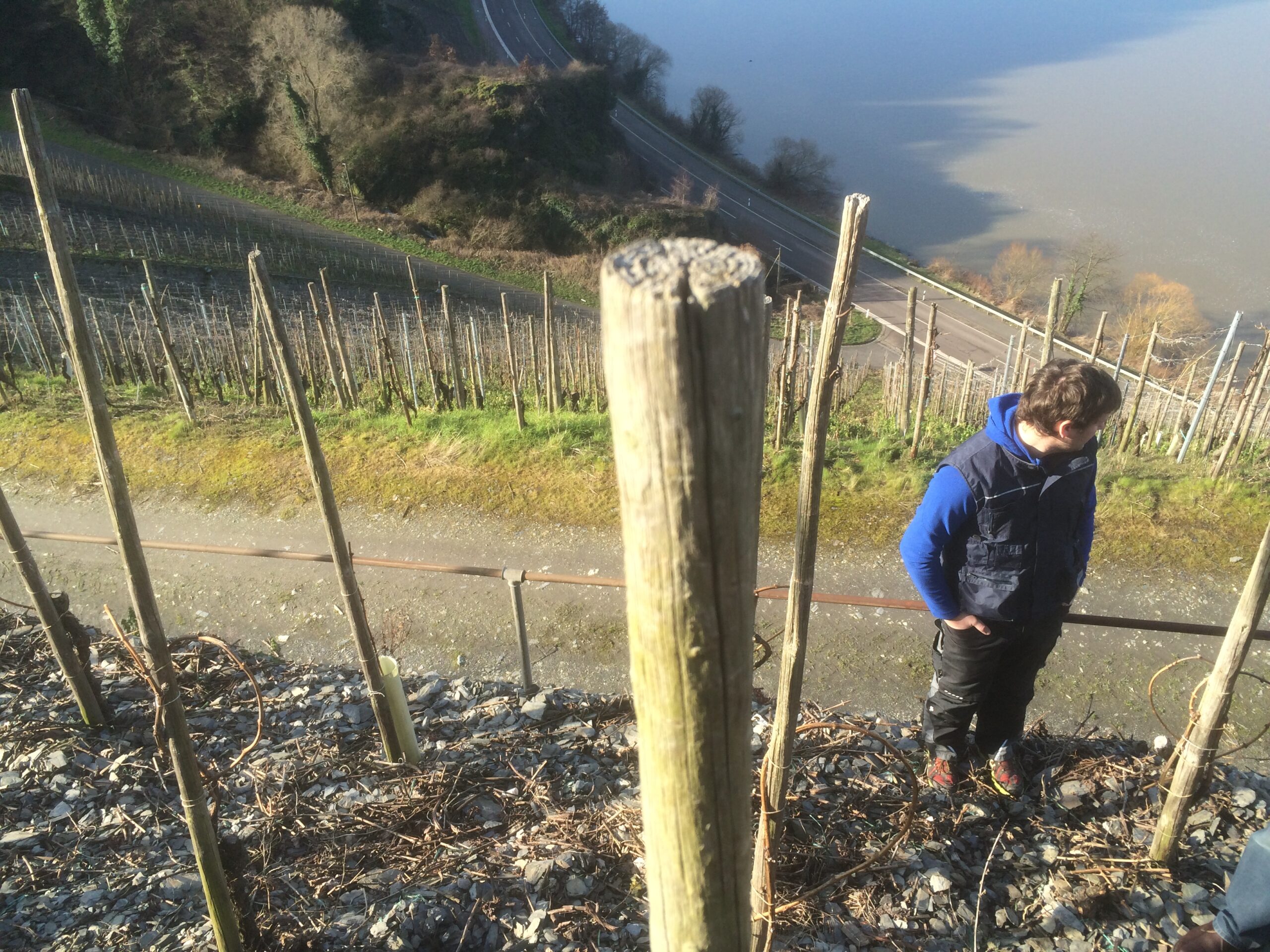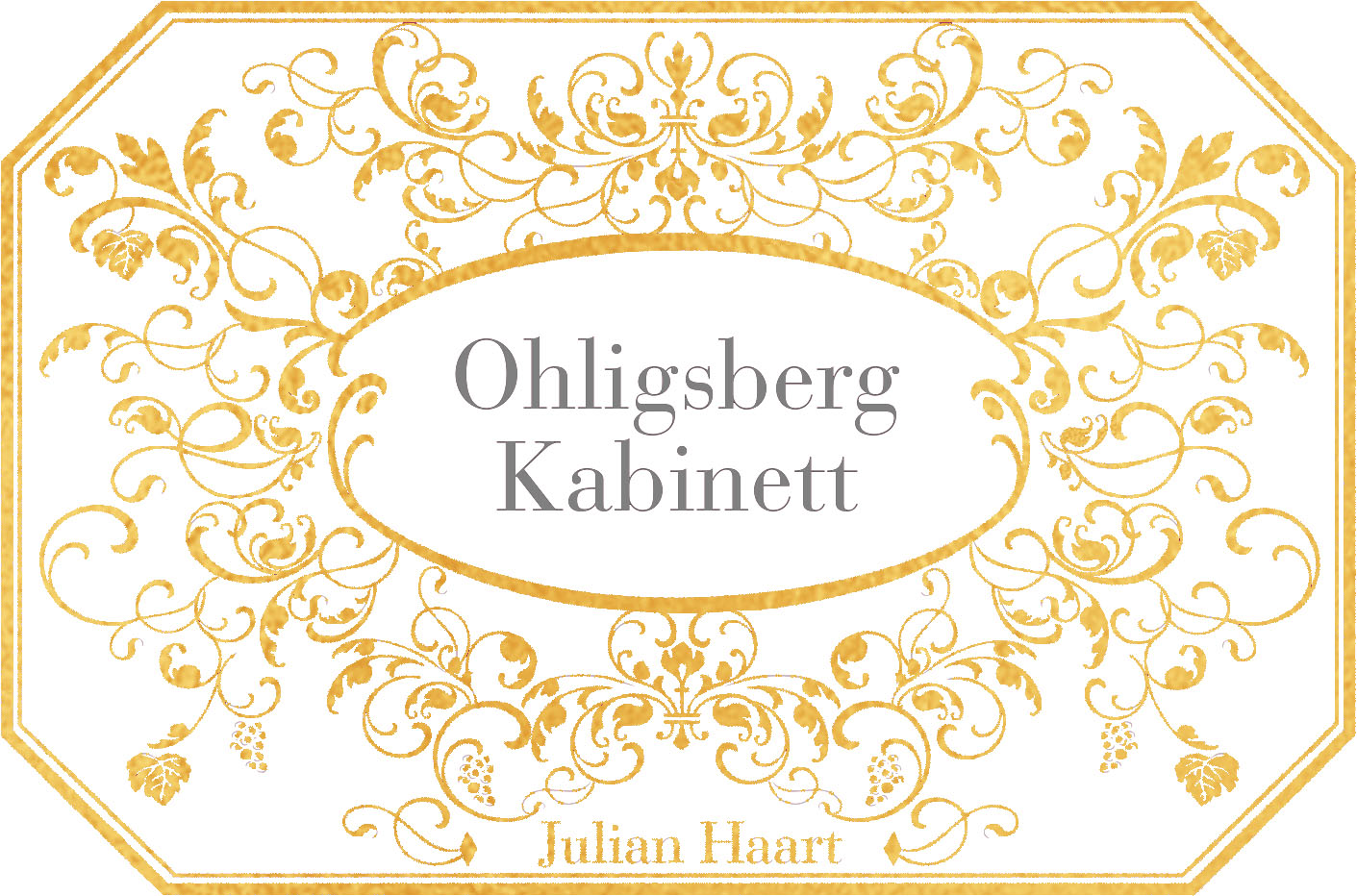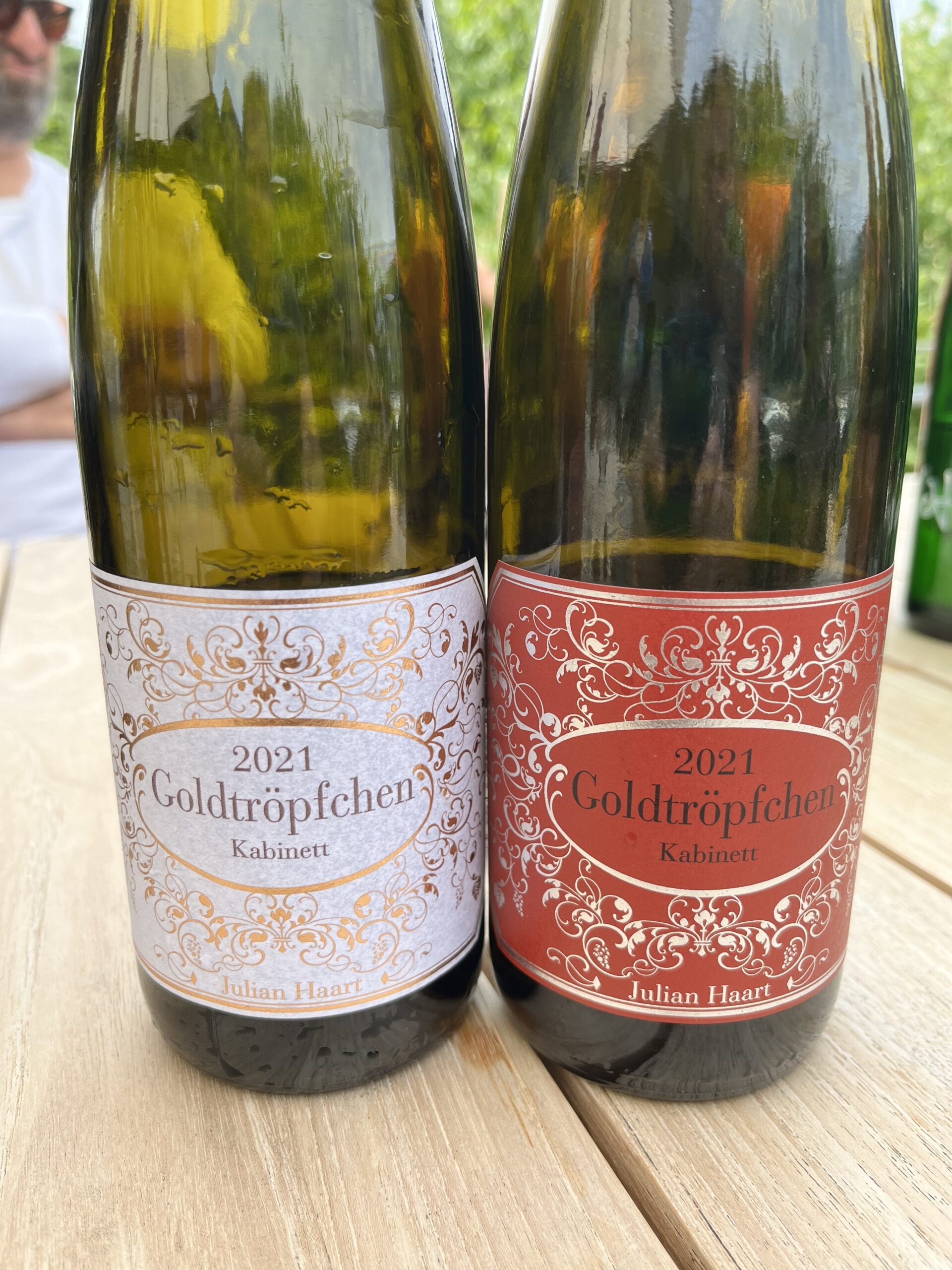Julian Haart apprenticed with Egon Müller, Klaus Peter Keller, and Werner Schönleber. That’s like learning to draw under da Vinci, Picasso, and Warhol.
It’s pretty serious.
Julian’s first vintage under his own label was in 2010. Although none of the wine was released in the U.S. (there was just so little wine available; we began with the 2011 vintage), David Schildknecht, writing for Parker’s Wine Advocate at the time, penned the following: “Not many wine careers can have started off on a more superlative level than Haart’s, yet from my several conversations with him I am convinced that his perfectionism goes hand in hand with rigorous self-criticism that should preclude success going to his head.”
I would say this is true: I have met few more-serious winemakers. Most of his tastings end with him telling you what he would have done differently, where he thinks he failed, how he could have done better. Then he’ll lay on the table an absolutely insane meal (before wine, Julian trained with the famous German chef Klaus Erfort) and open a bunch of wines from the Jura, or Burgundy, or the Loire, or wherever.
Normally, this is when he reminds me that I was five minutes late today (and seven minutes late last year) and he’ll go over, in some detail, the time I totally missed a Bar-B-Q back in 2013. His rigorous criticism extends, often it seems, to me and to all those he loves. It’s one of his many charms.
I first met Julian in maybe 2008 or 2009? I was visiting Keller and he and Keller were watching a football (soccer) game. I’m not sure he even looked up at me? A few years later Keller was kind enough to open a bottle or two of Julian’s 2010ers and said, “Hey, I think this guy needs an importer for the U.S.” I was impressed with the wines, reached out to Julian, and that was that. In the end I think I annoyed him less than most people, and that was good enough for him. And thus Julian became only the fourth grower to sign on to vom Boden. Yes, Julian is one of the first four vom Boden growers, along with Lauer, Stein, and Weiser-Künstler.
Am I one lucky son of a bitch? Yes I am.
That said, while Julian’s wines were never terribly hard to sell, they also weren’t immediate commercial successes. People, in general, liked a little belly fat on their German Rieslings and here were these wines of tendons and muscle. In fact, I probably have one of the larger collections of Julian Haart wines from say 2011 to 2017 in the U.S., solely because I’d sell the wines and then buy them back a few months later. This gives you some insight into my business savvy: buy, sell higher, and then buy back even higher. Anyway, it was a good eight-year run for me, selling Julian’s wines to those who would listen and then buying some back for myself.
I’m not exactly sure when it happened, but Julian’s reputation exploded seemingly overnight and the wines quickly became the collector status-symbols they are today. Maybe this was in 2019? I’d say outside of Keller and Egon Müller, Julian is only the third German grower to completely transcend the world of German wine. He is considered one of the greats of the wine world – irrelevant of country, region and grape – and collected as such. Obviously he and Nadine deserve their successes. It’s maybe obnoxious to write this, but these wines are worth the difficult time you’ll have trying to find a bottle.
Nowadays I can’t afford to keep much. Not because of the pricing, but because of the demand. Julian, a true Moselaner in the deepest sense (the family has been involved in viticulture here since 1337), keeps his prices almost absurdly low. I hear echoes of Ulli Stein sometimes when I speak with Julian: “The price is enough for me; I don’t need a fancy watch or a Porsche.”
It must be said that the rarity of the wines (Julian and Nadine farm only five hectares) combined with the wildly fair pricing has fueled something of a furious gray market for Julian Haart’s bottlings. Where there is money to be made, in they swoop, vultures sucking up the allocations for Denmark, Sweden, Singapore, and who-knows-where-else. The best is the heartfelt sales emails they pen, emotional recountings of how they discovered and fell in love with these wines, rarely mentioning the fact they never supported nor traded in the wines before they became luxury products.
Here’s a great place to insert my favorite Kurt Vonnegut line: “So it goes.”
Julian’s first vineyard purchase was a very serious parcel, only around 8,000 square meters (0.8 hectares) right in the filet of the Grand Cru site Ohligsberg, just downstream from Julian’s hometown of Piesport. The following year (2011), Haart expanded the estate with two Grand Cru sites, the Goldtröpfchen and Schubertslay (photographed below), both in Piesport. The Goldtröpfchen parcels include terraces established in the early 20th century and the Schuberstlay, one of the smallest single-vineyards in all of the Mosel with only about one hectare under vine, flaunts ungrafted vines over 100 years old. This is serious terroir… and very labor-intensive, very expensive terroir to farm.
So, beginning with vintage 2018 Julian handed the Schubertslay vineyard over to Keller. In return, with vintage 2018, Julian began making a small amount of wine from parcels that Keller helped him source in the Rheinhessen, including in the Frauenberg and Zellerweg am Schwarzen Herrgott vineyards.
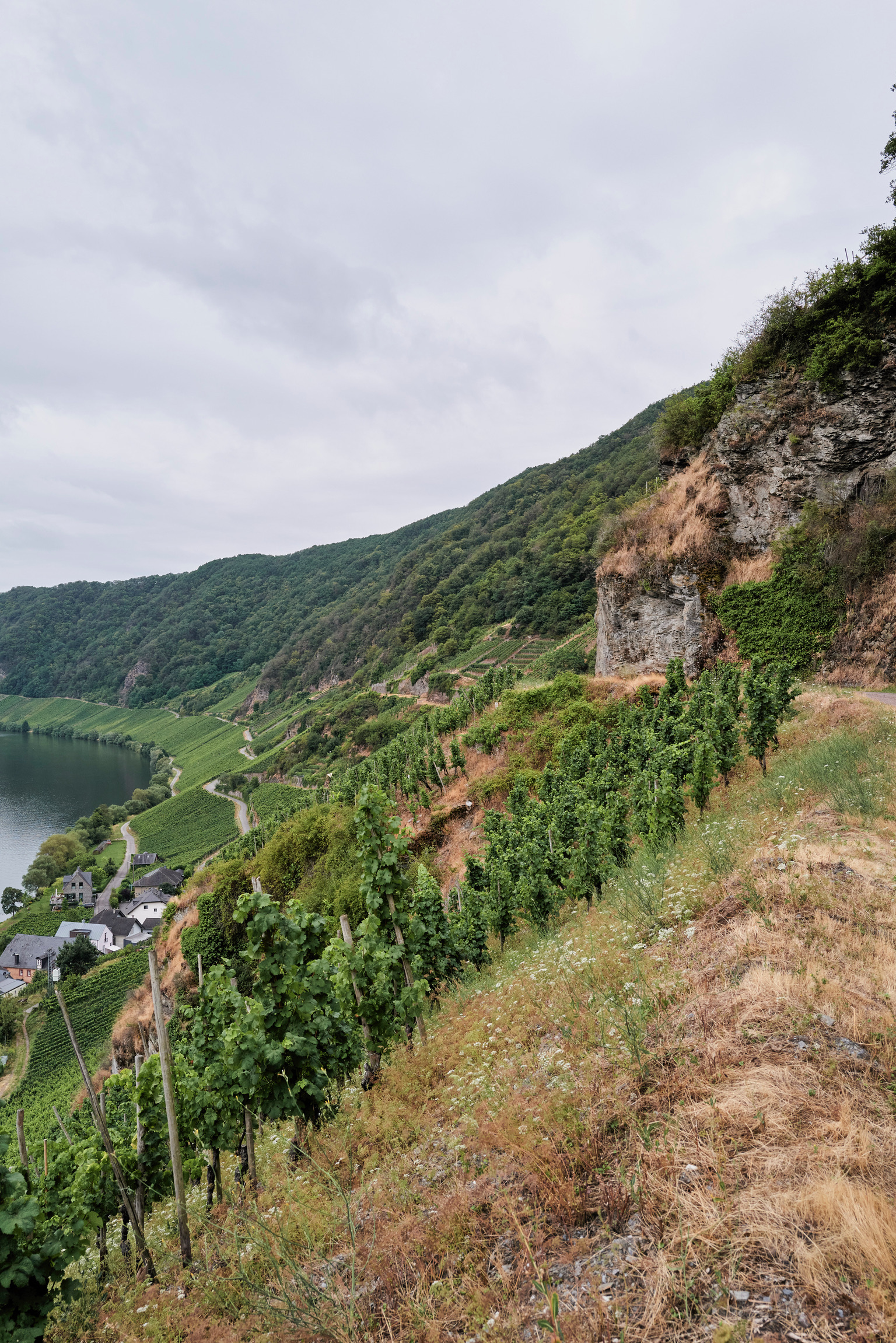
The estate has grown to around five hectares and this is, roughly, where Julian wants it to stay. Part of the joy of winemaking, for Julian, is doing everything, just him and his wife Nadine, and maybe some friends. This is vineyard work, and winemaking, at the most human scale. Nearly everything must be done by hand – most of the vineyards are steep as hell and most of them are terraced. Even walking through them is a bit hazardous.
As with Lauer, it makes sense to speak of the “terroir wines” and the “Prädikat wines” as two distinct categories. The terroir wines are those that ferment naturally, finding their own balance that is nearly always dry or dry tasting. In this grouping of wines we begin with the “1000L.” This wine is made from Fuder(s) of Julian’s wines that he doesn’t think are good enough for any of the above classifications; at the beginning the parcel was in the Goldtröpfchen, a small plot with 25-year-old vines. It was one Fuder (the traditional 1,000 liter barrel of the Mosel) and so I bought it all and we decided to call it “1000L.” It must be said, at this point I trust Julian enough, he knows the style and the quality enough, and he makes what he can. Sometimes it might be two Fuders. From here we progress up the Burgundian ladder, from “Moselle” (appellation level), “Piesporter” or “Wintricher” (village-level) up to the Grand Cru, single-vineyard bottlings “Goldtröpfchen” and “Ohligsberg.”
The Prädikat wines are labelled simply enough, from Kabinett to Spätlesen and Auslesen (the latter two, both rarely seen), always designated by the vineyard. It must be said that Julian has become something of a Kabinett specialist. To some extent, the Kabinetts are the focus of the estate and all the rigor that would have gone into making a TBA a century ago, Julian puts into the Kabinetts. As such, one will find (or, more likely, not find) quite a few different bottlings. There are the normal red label single-vineyard Kabinetts. There can be old-vine “alte Reben” Kabinett bottlings, usually denoted by their white label and an “alte Reben” mention on the back. Finally, there is a parcel of ungrafted vines planted in the Ohligsberg in 1924 that Julian will sometimes bottle with an artist’s label by the contemporary German painter Anton Henning. Since I think 2019, most of these rare Kabinett bottlings are only available in a wooden six-pack Kiste (case).
It’s all worth the hype, honestly. The wines showcase a glossy, super-pure fruit that shrieks across the palate with a pushing, sharply delineated acidity. Pulverized slate, polished to a fine dust, coats everything. These are just profound wines.
I remember when I wrote the first version of this grower profile, in 2013, I ended with this line, not really knowing totally what I meant: “These are wines of consequence.” I think I know now a bit of what I meant. Bravo Julian and Nadine.
Now that you’ve read all this, please enjoy the video below, a drive through the Goldtröpfchen vineyard accompanied by Wagner’s “Ride of the Valkyries.”





